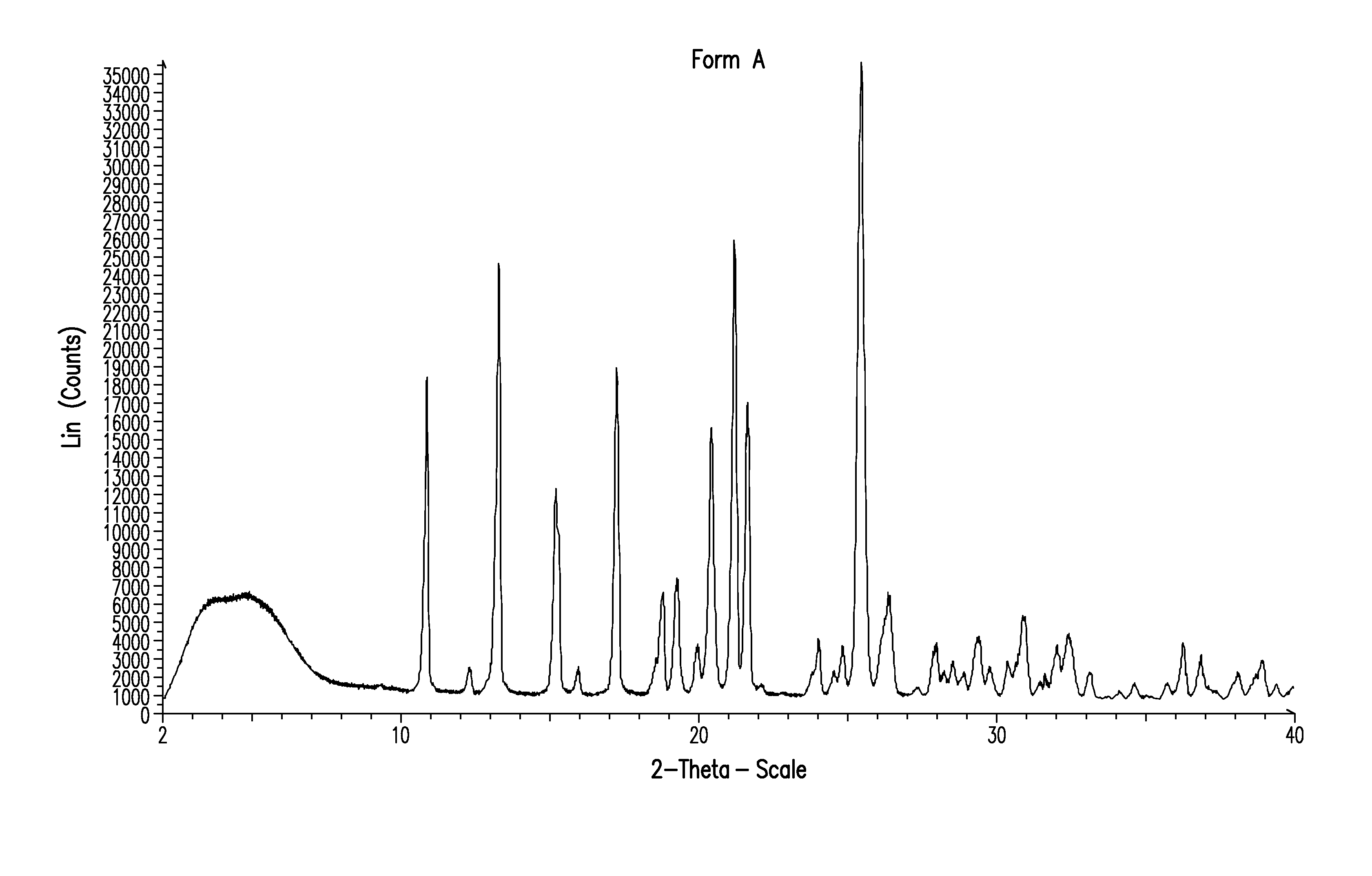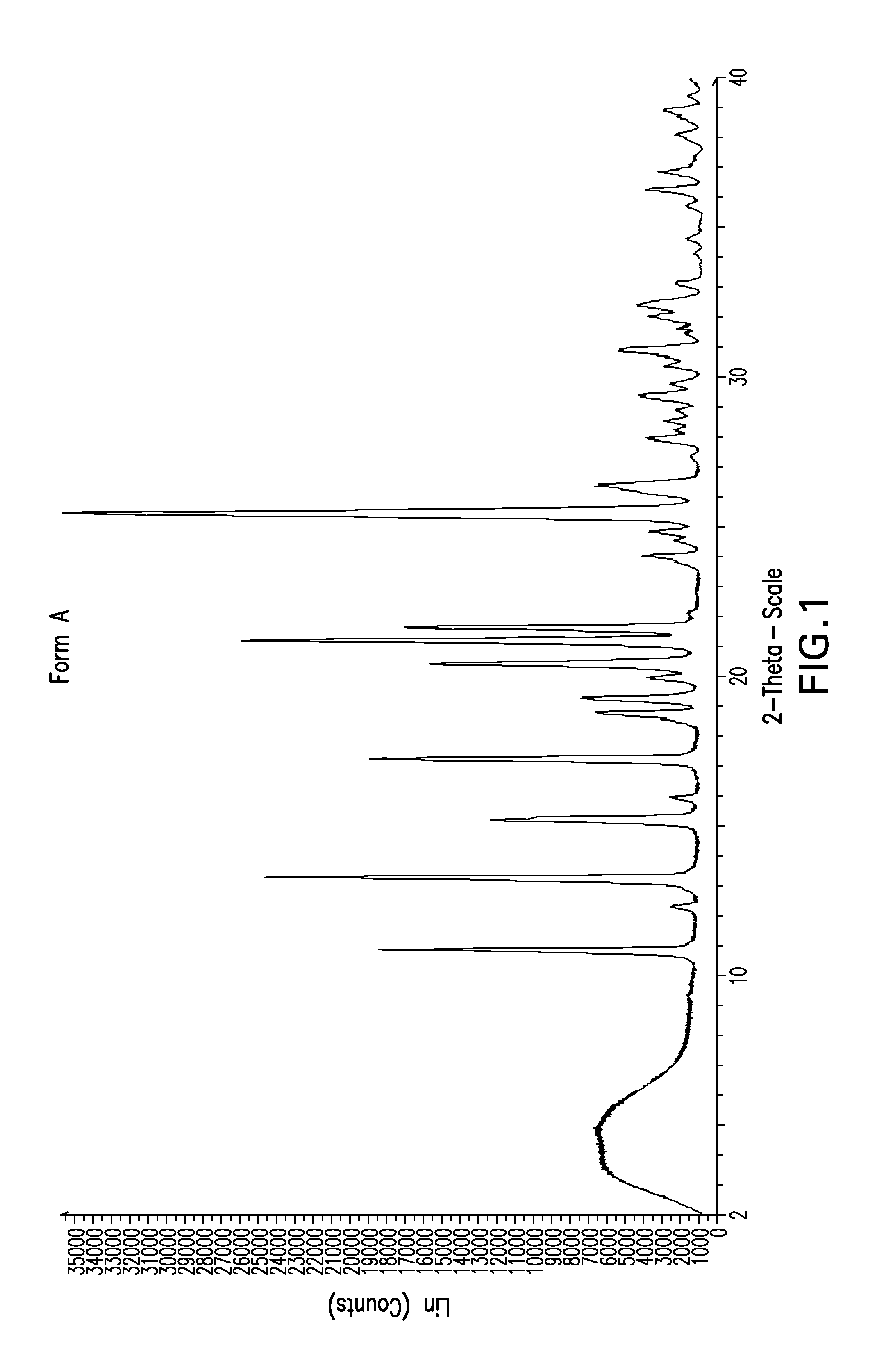Method of treatment
a technology of piperazin and a method of treatment, applied in the field of 11piperazin1yld, can solve problems such as substance dependen
- Summary
- Abstract
- Description
- Claims
- Application Information
AI Technical Summary
Benefits of technology
Problems solved by technology
Method used
Image
Examples
example 1
Preparation of 11-piperazin-1-yldibenzo[b,f][1,4]thiazepine
[0035]
[0036]Into a 1000 mL round-bottom flask equipped with a magnetic stirring bar and reflux condenser with a nitrogen inlet was charged with 25.0 grams (g) (0.110 mole) of dibenzo[b,f][1,4]thiazepine-11(10-H)-one (made by the method disclosed by J. Schmutz et al. Hely. Chim. Acta., 48: 336 (1965)), as a dry solid, followed by 310 mL POCl3 and 3 mL of N,N-dimethylaniline. The reaction mixture was heated at reflux (106 degrees C.) for 6 hours giving a clear orange solution. The reaction was then cooled to room temperature, and POCl3 removed on the rotary evaporator leaving an orange oil. This residue was partitioned between ice—water (500 mL) and ethyl acetate (800 mL). The layers were separated and the aqueous phase extracted with ethyl acetate (3×200 mL). The combined ethyl acetate extracts were dried over MgSO4, filtered, and then stripped down on the rotary evaporator, leaving the crude imino chloride as a light yellow ...
example 2
Preparation of 11-piperazin-1-yldibenzo[b,f][1,4]thiazepine, dihydrochloride salt
[0037]The free base was converted to it's dihydrochloride salt by dissolving it in a mixture of methanol (125 mL) and diethyl ether (125 mL), then treating with 250 mL of 1.0 M HCl / ether (Aldrich). An off-white gummy solid separated initially, and the mixture was further diluted with 500 mL ether. The gummy solid did not solidify on prolonged stirring. The solvents were decanted away from the gum. The gum was treated with absolute ethanol (200 mL), then stirred until crystallization occurred, giving a thick white suspension of crystals. This mixture was then slowly diluted with ether (800 mL) and allowed to stir overnight to complete the crystallization. The crystalline dihydrochloride salt was isolated by filtration, washed with ether (3×50 mL), then dried in vacuum at 60 degrees C. to afford the dihydrochloride salt of the title compound as a white crystalline solid (31.64 g, 98.8% conversion).
Analysi...
example 3
Preparation of crystalline 11-piperazin-1-yldibenzo[b,f][1,4]thiazepine)
Preparation A
[0039]Aqueous solution (584 mL; e.g., prepared by extraction of 11-piperazin-1-yldibenzo[b,f][1,4]thiazepine into water / HCl from a toluene solution such as described below in Preparation B) containing 11-piperazin-1-yldibenzo[b,f][1,4]thiazepine hydrochloride was charged to a jacketed 1 L flask. The flask was then charged with toluene (500 mL) and sodium hydroxide (48% w / w, 33.0 g). The mixture was stirred at 70° C. for 30 minutes and became white and cloudy. The mixture was then allowed to settle for 30 min and the phases were separated. The toluene layer was washed at 70° C. with 2×100 mL of water (1st wash=pH 10.3; 2nd wash=pH 8.0). The final toluene volume was 560 mL containing about 74 g of 11-piperazin-1-yldibenzo[b,f][1,4]thiazepine in good purity.
[0040]The above procedure was repeated for an additional four aqueous solutions of 11-piperazin-1-yldibenzo[b,f][1,4]thiazepine hydrochloride and t...
PUM
| Property | Measurement | Unit |
|---|---|---|
| volume | aaaaa | aaaaa |
| temperature | aaaaa | aaaaa |
| temperature | aaaaa | aaaaa |
Abstract
Description
Claims
Application Information
 Login to View More
Login to View More - R&D
- Intellectual Property
- Life Sciences
- Materials
- Tech Scout
- Unparalleled Data Quality
- Higher Quality Content
- 60% Fewer Hallucinations
Browse by: Latest US Patents, China's latest patents, Technical Efficacy Thesaurus, Application Domain, Technology Topic, Popular Technical Reports.
© 2025 PatSnap. All rights reserved.Legal|Privacy policy|Modern Slavery Act Transparency Statement|Sitemap|About US| Contact US: help@patsnap.com



